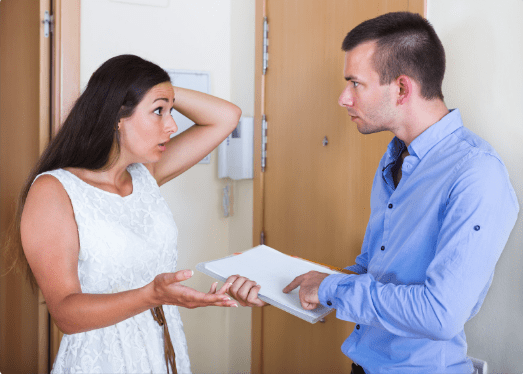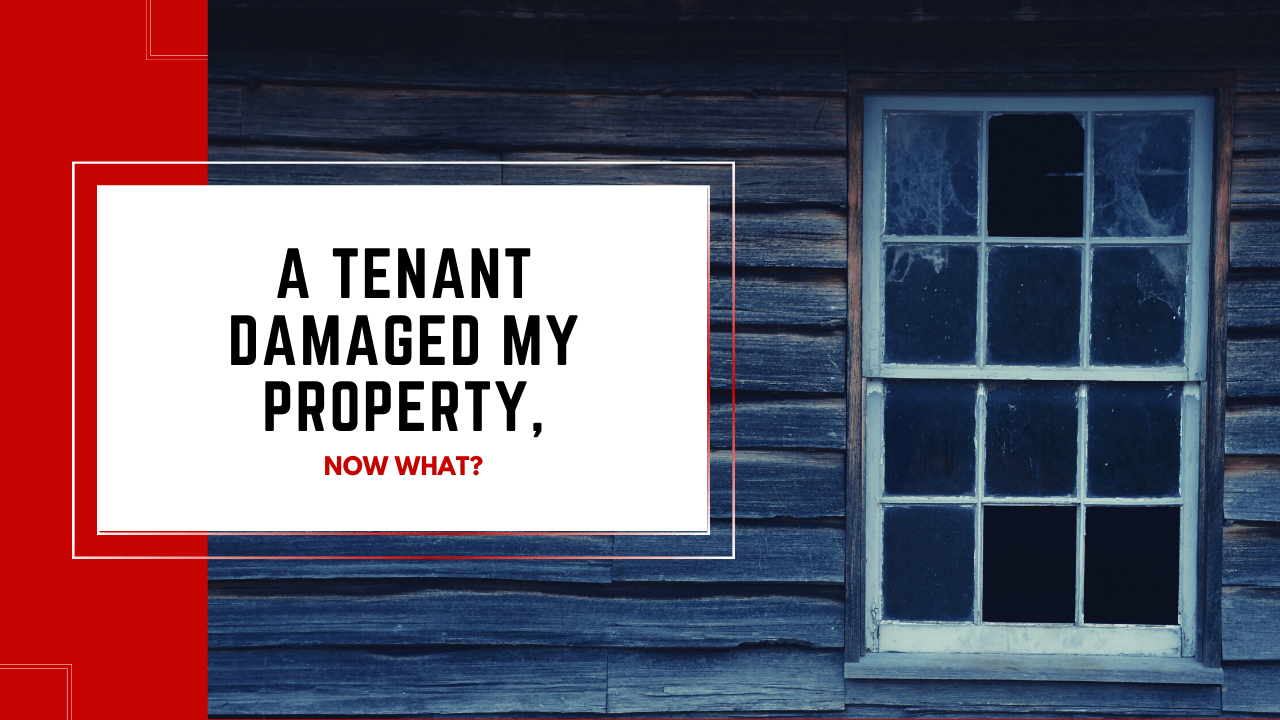As a landlord, it is obvious for you to expect tenants to treat the property respectfully and leave it in pristine condition. Unfortunately, it may not happen every time you rent a house. Even if you screen your tenants thoroughly before selecting them, they might accidentally cause damage to your asset, putting you into financial expenses.
Here is what you should do if your tenants cause damage to your Norfolk rental property.
1. Identify The Type Of Damage In Your Norfolk Property
To identify the damage, first, you should understand the difference between normal wear and tear and significant damage.
- What Is Normal Wear And Tear?
Normal wear and tear is a natural deterioration of the property that occurs due to regular use of all the places on the property like the kitchen, bathroom, living room, and bedroom. Here are a few examples of normal wear and tear.
- Faded, cracked, or peeling paint
- Torn or faded wallpapers
- Cracked window glasses
- Faded or worn carpet
- Light warping in the corners of the room
- Loose grouting around bathroom tiles
- Worn enamel in old bathtubs, sinks, and toilets
- Clogged sink due to broken plumbing
- Scratched flooring
- What Is Property Damage?
Damage is an unavoidable injury caused due to the careless attitude of your tenants. It can reduce the market value of your property and put you at financial risk. These damages are accidental, committed purposefully, or occur due to negligence. Some examples of significant damage are
- Stains or burns on carpet or flooring
- Unapproved alterations and wallpapers
- Chipped flooring
- Ripped doors
- Broken glasses or windows
- Leaking roofs
- Broken toilet seats
- Missing curtains
- Broken enamel in sink or bathtub
- Clogged toilets
- Rusted tabs
You cannot hold your tenants responsible for general wear and tear that inevitably occurs as a result of overusing the property. Whereas serious damage is often the result of misusing the property. We suggest assessing the damage properly to know whether it is accidental, deliberate, or caused due to natural calamities.
2. Know the Reasons for the Damage
Your tenants may not always be responsible for the damage. Sometimes, it may be your mistake not carrying out regular maintenance or inspections. For example, if you don’t replace the old malfunctioning appliances and tenants damage them accidentally, it is not completely their fault. The reason behind the damage can be delayed maintenance or skipped replacement of that particular item. Avoid blaming your tenants until you know they are solely at fault.
3. Document the Damage
Visual proof of the damage always comes in handy while charging tenants for repairs. Even if the renters deny confessing their mistakes, you can show them the pictures of the damage to justify your claims. So, always make sure you conduct move-in and move-out inspections to compare before and after property conditions. Keep a record of everything that you spot during the process to keep things transparent.
4. Calculate the Estimated Cost of Repairs
Once you inspect the property and record the damage, the next step is to calculate the estimated cost of repairs. You can hire a licensed contractor or professional vendor to assess the property damage and quote the tentative repair costs. If you have built positive relationships with vendors who know the downsides of your property, they can make the repairs at a fair price. You can also talk to local property managers as they can provide an insight into local repair expenses.
Landlords have the right to charge tenants for the damage they cause to the property. However, it is necessary to take certain factors into account while determining the cost.
- Age Of Item
Check if the damaged item is brand new or has been there on the property for several years.
- Original Cost Of Item
Learn about the original price of the damaged item. Try to remember how much you paid while purchasing an item. The cost may vary according to the item. For example, a new carpet would generally cost around $1,217, but if you decide to install hardwood flooring, it will cost around $12 per square foot.
- Repair or Complete Replacement
Examine the damaged item and check if there is a scope for repairs or if you need to replace it completely. For example, will you be repairing the compressor of the refrigerator, or does the entire refrigerator need to be replaced?
- Length of Time to Complete Repair
The duration required to repair depends on the severity of the damage. For example, you can repair the dishwasher within a day, but re-tiling a bathroom may require a week.
- Special Skills Needed to Repair
You can fix some damages by yourself, such as changing fixtures or painting the wall, but you would need a licensed vendor or contractor to repair appliances or clean air filters.
5. Talk to Your Norfolk Tenants
You may find talking to your renters about the repair costs quite taxing, but it is crucial to convey the seriousness of the situation to them. Here is how you can talk about the property damage with your tenants.
- Specify the Maintenance Responsibilities
Your lease agreement should specify things like:
- Security deposit
- Move-in inspection checklists
- The difference between normal wear and damage
- The tenants' responsibility is to keep the unit clean and safe.
It will help you set the right expectations for tenancy, eliminate the chance of financial surprises, and you will be less likely to face disputes over the security deposit.
- Check With the Tenants During the Lease
As a landlord, it is your responsibility to keep up with regular property maintenance. You can ask your renters to check the plumbing system, appliances, air conditioning, smoke detectors, fixtures, and central heating. It will add to the longevity of your property and maintain its market value.
- Conduct a Move-Out Inspection
You have to conduct a move-out inspection to assess the property condition and look for the damage caused during the tenancy. You can create a move-out checklist to ensure you check every item on the unit. If you spot any potential damage, consider discussing it with tenants and let them know about the deductions you may make to cover repair costs.
Apart from this, consider keeping all documents like photos, videos, notes of property damage, and a fair estimate of repairs with you while meeting them. Be flexible enough to share the repair costs about the items you are thinking of replacing anyway. For example, if tenants burn a carpet that you were thinking of replacing for the next tenancy, you can charge them partially for it.
6. Deductions From the Security Deposit
According to landlord-tenant law, landlords can make deductions from the security deposit in the following scenarios.
If the renters refuse to pay utility bills
In case tenants cause potential damage to the unit
Deductions for delaying rent payment
To cover charges for cleaning a property after tenants move out
Deductions for things spelled out in a lease
If tenants violate the lease agreement
While holding the security deposit, you have to submit documentation of damage and the cost of repairs. If the tenants become hostile, you can take legal recourse by sending a notice of deductions from the security deposit or filing a police report to let your tenants know about the seriousness of the situation.
7. Warn the Renters
Consider warning your tenants, either verbally or through a maintenance clause in a lease agreement, to treat the property respectfully and not repeat the mistakes that can cause hazardous damage to the unit. If they still fail your expectations, you can send a 30 days notice and evict them. Also, encourage them to get renter’s insurance as it can cover the damage caused by tenants and save repair costs for both parties.
8. Take Legal Action If a Tenant Causes Intentional Damage to Your Norfolk Rental
As a landlord, you have several rights to protect your rental unit when tenants try to destroy it. In specific circumstances, you can take the following actions.
- Contact the Police
You can contact the police if your tenants cause deliberate damage or steal expensive items like appliances or HVAC systems from your property. The police may help you pursue criminal charges and provide a report for filing an insurance claim or suing your tenants for damages.
- File an Insurance Claim
The insurance policy covers the damage caused by the residents to your unit and liabilities that you may face in the future. Consider hiring a professional insurer to understand how insurance can impact your business and increase your annual premium. You can customize your policy according to your rental expectations and cancel it whenever you want.
- Sue Your Renters

Tenants may disagree with your claim and refuse to pay repair costs. In such situations, you can sue your tenants in small court claims and force tenants to pay the cost of repairs. However, you may need an inspection report, documentation of damage, and other papers to present in the court as proof.
As responsible Norfolk landlords, you should handle security deposit returns patiently and reasonably, or hostile tenants can cause even more damage by smashing windows or tearing carpets.
If you are unsure about handling the process yourself, hire a property management company like Doud Realty Services. We can help you deal with property damages, conduct inspections, and provide repair services.
Contact us at Doud Realty Services for more information.


